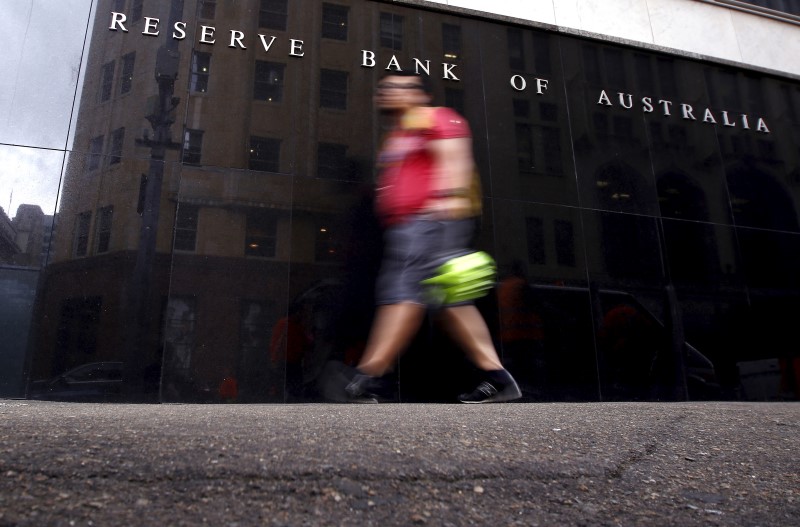Investing.com - The Reserve Bank of Australia held its benchmark cash rate at a record low 1.50% as expected on Tuesday, while noting a stronger Aussie could complicate efforts to rebalance the economy.
For the full-text statement, see:
Statement by Philip Lowe, Governor:
Monetary Policy Decision
At its meeting today, the Board decided to leave the cash rate unchanged at 1.50 per cent.
The global economy is continuing to grow, at a lower than average pace. Labour market conditions in the advanced economies have improved over the past year. Economic conditions in China have steadied, supported by growth in infrastructure and property construction, although medium-term risks to growth remain. Inflation remains below most central banks’ targets, although headline inflation rates have increased recently. Globally, the outlook for inflation is more balanced than it has been for some time.
Commodity prices have risen over the course of this year, reflecting both stronger demand and cut-backs in supply in some countries. The higher commodity prices have supported a rise in Australia’s terms of trade, although they remain much lower than they have been in recent years. The higher prices are providing a boost to national income.
Financial markets are functioning effectively. Government bond yields have risen further with the adjustment having been orderly. Funding costs for some borrowers have also risen, but remain low. Globally, monetary policy remains remarkably accommodative.
In Australia, the economy is continuing its transition following the mining investment boom. Some slowing in the year-ended growth rate is likely, before it picks up again. Further increases in exports of resources are expected as completed projects come on line. The outlook for business investment remains subdued, although measures of business sentiment remain above average.
Labour market indicators continue to be somewhat mixed. The unemployment rate has declined this year, although some measures of labour underutilisation are little changed. There continues to be considerable variation in employment outcomes across the country. Part-time employment has been growing strongly, but employment growth overall has slowed. The forward-looking indicators point to continued expansion in employment in the near term. Inflation remains quite low. The continuing subdued growth in labour costs means that inflation is expected to remain low for some time, before returning to more normal levels.
Low interest rates have been supporting domestic demand and the lower exchange rate since 2013 has been helping the traded sector. Financial institutions are in a position to lend for worthwhile purposes. These factors are assisting the economy to make the necessary adjustments, though an appreciating exchange rate could complicate this.
Conditions in the housing market have strengthened overall, although they vary considerably around the country. In some markets, prices are rising briskly, while in others they are declining. Housing credit has picked up a little, although turnover of established dwellings is lower than it was a year ago. Supervisory measures have strengthened lending standards and some lenders are taking a more cautious attitude to lending in certain segments. Considerable supply of apartments is scheduled to come on stream over the next couple of years, particularly in the eastern capital cities. Growth in rents is the slowest for some decades.
Taking account of the available information, and having eased monetary policy earlier in the year, the Board judged that holding the stance of policy unchanged at this meeting would be consistent with sustainable growth in the economy and achieving the inflation target over time.
